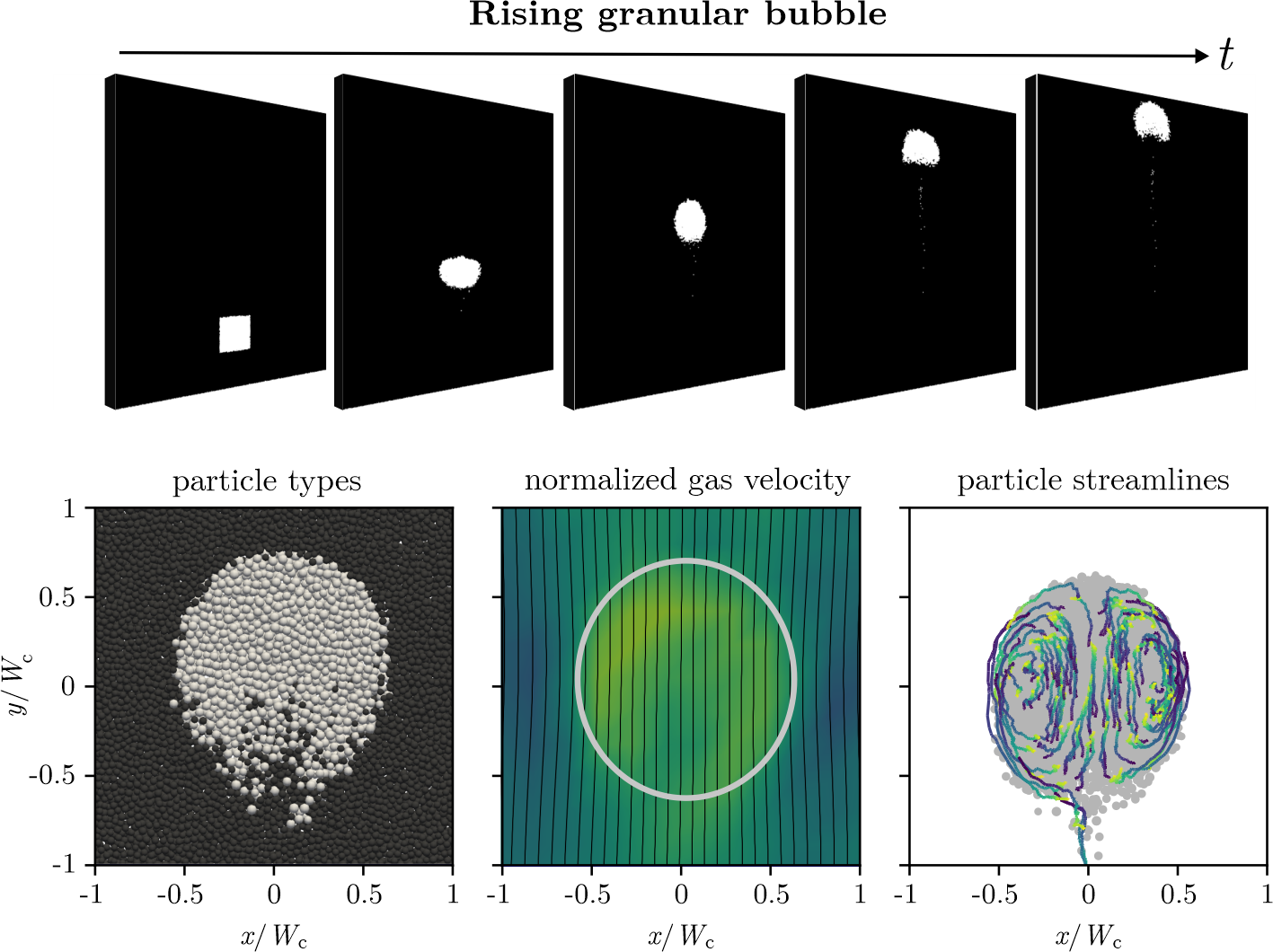2022 Annual Meeting
(78b) Fluid-like Phenomena in Binary Granular Materials: Revealing the Physics behind Rising Granular Bubbles and Splitting Granular Droplets
Authors
The present work elucidates the physics behind rising granular bubbles and sinking granular droplets and further explores the transition from rising to sinking. To this end, experiments in pseudo-2D vibro-gas-fluidized beds are combined with numerical simulations using computational fluid dynamics and the discrete element method (CFD-DEM). This combined approach allows insight into the interstitial gas flow and the network of inter-particle forces5.
The results reveal a gas flow heterogeneity in the proximity of a granular cluster, where gas flows preferentially through regions of larger particles due to their increased permeability. This preferential gas flow is the driving force for the rising and sinking of the cluster since the heterogeneity locally affects the fluidization of particles and consequently their motion. Based on these results an analytical buoyancy model is derived to compile a dimensionless regime map that predicts the occurrence of granular bubbles and droplets, as well as additional regimes that have not been reported yet experimentally. By revealing the underlying physics of the motion of a granular cluster subjected to agitation, these findings have implications on the operation of industrial machinery such as vibro-fluidized beds, where binary or polydisperse granular materials tend to segregate.
1. Goldfarb DJ, Glasser BJ, Shinbrot T. Shear instabilities in granular flows. Nature. 2002;415(6869):302-305.
2. Duran J. Rayleigh-Taylor instabilities in thin films of tapped powder. Phys Rev Lett. 2001;87(25):254301.
3. Davidson JF, Harrison D, Carvalho JRFGD. On the liquidlike behavior of fluidized beds. Annu Rev Fluid Mech. 1977;9(1):55-86.
4. McLaren CP, Kovar TM, Penn A, Müller CR, Boyce CM. Gravitational instabilities in binary granular materials. Proc Natl Acad Sci USA. 2019;116(19):9263-9268.
5. Metzger JP, McLaren CP, Pinzello S, Conzelmann NA, Boyce CM, Müller CR. Sinking dynamics and splitting of a granular droplet. Phys Rev Fluids. 2022;7(1):014309.
